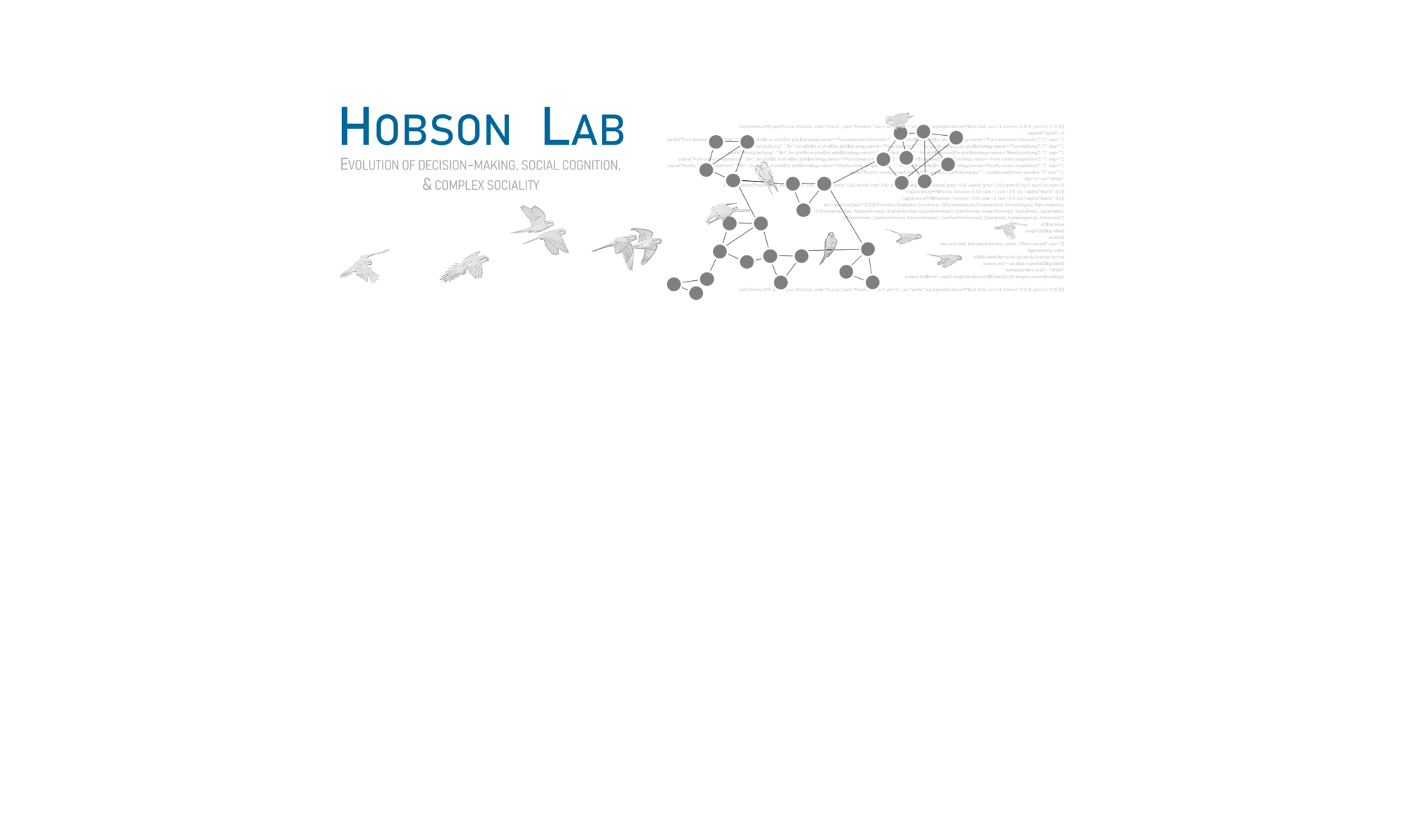New preprint is available on ecoevorxiv here! With gorgeous art by V. Darby Moore.
We used data on 12 species of parrots who form mixed species groups to eat clay from exposed cliffs along rivers in Peru to determine the simplest methods each species could be using to make co-occurrence and joining decisions involving other species.
Abstract
Many animals participate in mixed-species aggregations for a variety of reasons, leading to species specific differences in benefits and costs, resulting in a variety of community assemblage patterns and dynamics based on what information individuals use to make joining decisions. Current research tends to focus specifically on “species” as a defining factor affecting joining decisions. However, we still have little understanding of how species perceive each other when making these decisions and what categories of perception are important (e.g., color, group size). We propose a new approach: instead of assuming species recognition, we test what kind of information each species may use about others to make decisions about which mixed-species aggregations to participate in. We used data on mixed-species aggregations of 12 species of parrots, where the species vary widely in their overall size, colors, and potential motivations for joining different groups. We used co-occurrence and joining patterns with new computational methods to test how these parrot species make grouping decisions. Our results show that using these two perspectives, static co-occurrences and dynamic joining, provided very different insight into the ways species interact with each other. While some species used a more complex categorization system (based on 12 species), the majority of species (7 of 12) used simpler category systems based on two or three categories. We found that not only does this approach provide a framework to test hypotheses about why individuals join or leave mixed species aggregations, it also provides insight into what features each parrot likely used to make their decisions. In doing so, our approach goes farther than previous approaches and provides a link to the perceptive and cognitive abilities of the animals making these minute-by-minute decisions.
Altmetrics





